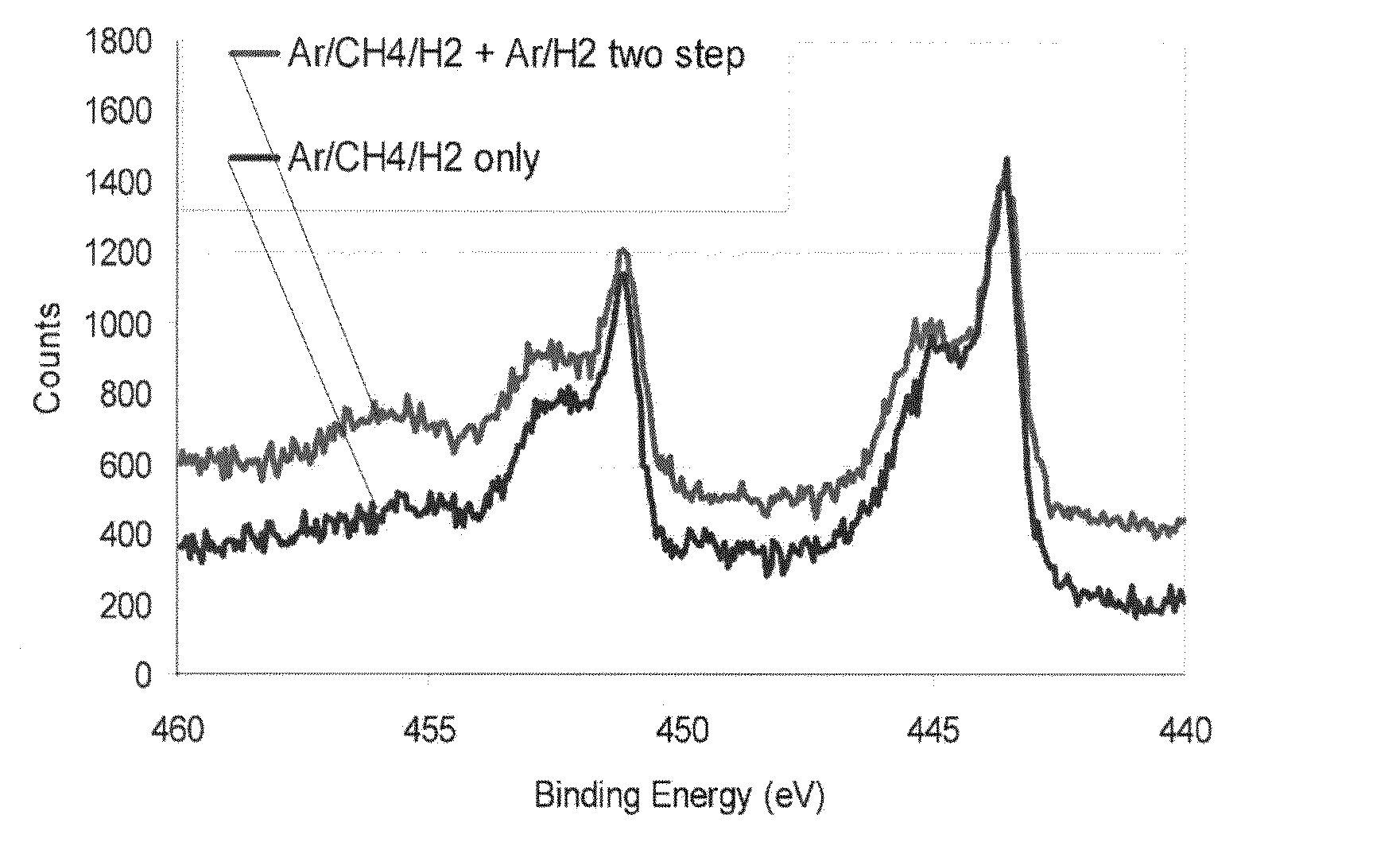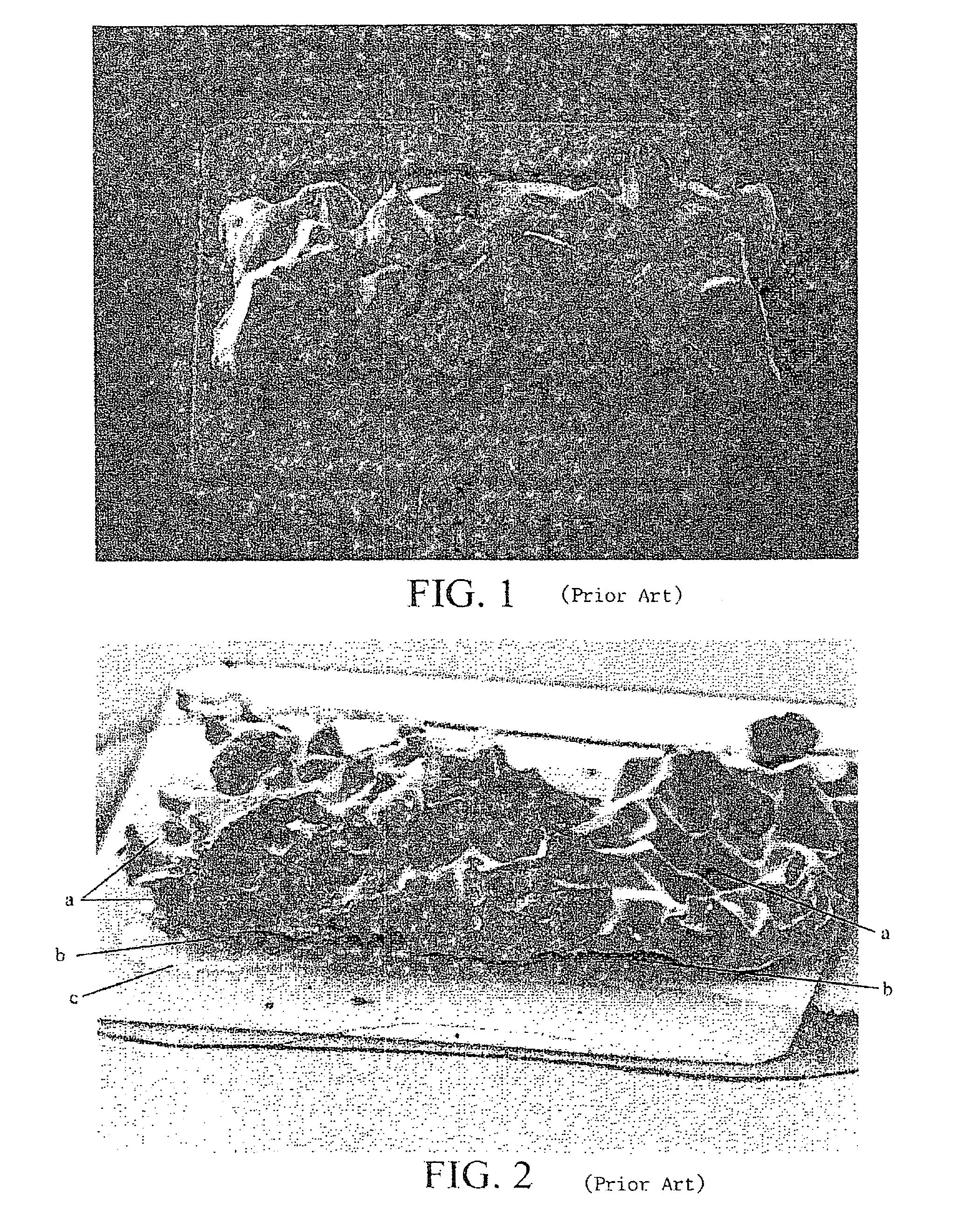Method to improve indium bump bonding via indium oxide removal using a multi-step plasma process
a plasma process and indium oxide technology, applied in the direction of layered products, chemistry apparatus and processes, cleaning using liquids, etc., can solve the problems of high yield, difficult to obtain a reliable, high yield process for high density pattern of bumps, and the tendency of indium bumps to oxidize during air exposure,
- Summary
- Abstract
- Description
- Claims
- Application Information
AI Technical Summary
Benefits of technology
Problems solved by technology
Method used
Image
Examples
Embodiment Construction
[0025]Bump bonding uses indium bumps to directly connect a semiconductor IC to another structure or substrate face down eliminating the need for wire bonding. However, if the indium bumps become oxidized prior to bump bonding a treatment is needed to remove the oxide in order to reduce the contact resistance of the solder joint between the two halves of the flip-chip structure. The present invention is a multi-step plasma process to remove indium oxide from indium bumps which does not require the use of halogens, does not change the bump morphology, and which exhibits increased removal effectiveness over a single step plasma based hydrogen treatment.
[0026]The process is intended for use on a semiconductor device having integrated circuit(s) and contact pads metalized on the surface of the device, and indium solder dots or bumps deposited on each of the pads by any conventional deposition process. Although the method of the present invention may be used with solder bumps formed by an...
PUM
| Property | Measurement | Unit |
|---|---|---|
| pressure | aaaaa | aaaaa |
| power | aaaaa | aaaaa |
| pressure | aaaaa | aaaaa |
Abstract
Description
Claims
Application Information
 Login to View More
Login to View More - R&D
- Intellectual Property
- Life Sciences
- Materials
- Tech Scout
- Unparalleled Data Quality
- Higher Quality Content
- 60% Fewer Hallucinations
Browse by: Latest US Patents, China's latest patents, Technical Efficacy Thesaurus, Application Domain, Technology Topic, Popular Technical Reports.
© 2025 PatSnap. All rights reserved.Legal|Privacy policy|Modern Slavery Act Transparency Statement|Sitemap|About US| Contact US: help@patsnap.com



